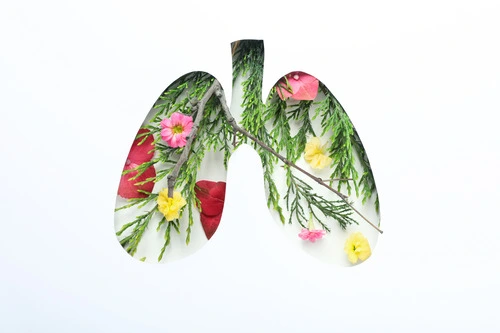
Improving Indoor Air Quality Through Maintenance
Learn practical steps to monitor and enhance IAQ for a healthier living environment.
Introduction
Indoor air quality (IAQ) is crucial for maintaining a healthy and comfortable living environment. Poor IAQ can lead to various health issues, including respiratory problems, allergies, and even long-term diseases. Studies have shown that indoor air can be significantly more polluted than outdoor air, highlighting the importance of proper maintenance to ensure good air quality inside buildings. This article explores the role of maintenance in improving IAQ and provides actionable steps to achieve a healthier indoor environment.
Understanding Indoor Air Quality
Indoor air quality refers to the condition of the air within and around buildings, particularly as it relates to the health and comfort of occupants. Common indoor air pollutants include dust, mold, volatile organic compounds (VOCs), radon, carbon monoxide, and allergens such as pollen and pet dander. Exposure to these pollutants can cause a range of health effects, from minor irritations to serious respiratory and cardiovascular diseases.
The Role of HVAC Systems in Indoor Air Quality
HVAC (heating, ventilation, and air conditioning) systems play a pivotal role in maintaining IAQ. These systems regulate temperature, humidity, and air circulation within a building. However, if not properly maintained, they can become sources of pollution themselves.
Steps for maintaining HVAC systems to improve IAQ:
Regular Filter Changes: HVAC filters trap dust, pollen, and other airborne particles. Replacing filters every 1-3 months ensures they remain effective.
Duct Cleaning: Over time, dust and debris can accumulate in ducts, reducing airflow and spreading pollutants. Professional duct cleaning can alleviate this problem.
Coil Cleaning: The evaporator and condenser coils in HVAC systems can collect dust and mold, which can then be circulated through the air. Regular cleaning helps maintain efficiency and air quality.
Inspection and Maintenance of Vents and Fans: Ensuring that vents and fans are clean and unobstructed helps maintain proper airflow and reduces the risk of pollutant buildup.
Routine Cleaning and Housekeeping
Effective cleaning is essential for reducing indoor pollutants. Dust, pet dander, and other allergens can accumulate on surfaces, contributing to poor IAQ.
Effective cleaning practices include:
Dusting with Microfiber Cloths: Microfiber cloths are effective at trapping dust particles rather than just dispersing them into the air.
Using Vacuum Cleaners with HEPA Filters: HEPA (High-Efficiency Particulate Air) filters capture fine particles that standard vacuum cleaners might miss.
Regularly Cleaning Carpets and Upholstery: Carpets and upholstery can harbor dust mites and allergens. Regular cleaning helps reduce these pollutants.
Reducing Clutter: Clutter can accumulate dust and make cleaning more difficult. Keeping spaces organised helps minimise dust accumulation.
Controlling Humidity Levels
Humidity levels significantly impact IAQ. High humidity can promote mold growth and dust mite infestations, while low humidity can cause respiratory irritation.
Maintenance practices to control humidity:
Using Dehumidifiers: Dehumidifiers help maintain optimal humidity levels (30-50%) by removing excess moisture from the air.
Repairing Leaks and Water Damage Promptly: Addressing leaks and water damage quickly prevents mold growth and structural damage.
Ventilation in High-Humidity Areas: Ensuring proper ventilation in bathrooms, kitchens, and laundry rooms helps control humidity levels.
Ventilation Strategies
Proper ventilation is crucial for diluting indoor pollutants and bringing in fresh air. Both natural and mechanical ventilation systems can be used to improve IAQ.
Maintenance practices for ventilation systems:
Regular Inspection and Cleaning of Vents and Fans: Ensuring that ventilation systems are clean and functioning properly helps maintain good airflow.
Ensuring Proper Operation of Exhaust Fans: Exhaust fans in kitchens and bathrooms should be regularly inspected to ensure they are removing moisture and pollutants effectively.
Opening Windows Regularly: Natural ventilation through open windows can help improve IAQ by allowing fresh air to circulate.
Air Purification Solutions
Air purifiers can effectively remove airborne pollutants, improving IAQ. Different types of air purifiers target various pollutants, from dust and pollen to VOCs and bacteria.
Maintenance of air purifiers includes:
Regular Filter Changes: Like HVAC systems, air purifiers require regular filter changes to maintain their effectiveness.
Cleaning and Servicing Air Purifier Units: Regular maintenance ensures that air purifiers continue to operate efficiently.
Monitoring and Testing Indoor Air Quality
Regular monitoring of IAQ helps identify potential issues before they become significant problems. There are various tools and methods available for testing IAQ.
Tools and methods for testing IAQ:
IAQ Monitors: These devices can measure various pollutants, humidity levels, and temperature, providing real-time data on air quality.
Professional IAQ Testing Services: Professional services can conduct comprehensive IAQ assessments and provide recommendations for improvement.
Interpreting IAQ test results:
Understanding Pollutant Levels: Knowing the acceptable levels of different pollutants helps in taking appropriate corrective actions.
Taking Corrective Actions: Based on test results, implement necessary maintenance practices or improvements to enhance IAQ.
Educating Occupants and Employees
Awareness and education are key to maintaining good IAQ. Occupants and employees should be informed about practices that contribute to a healthy indoor environment.
Tips for occupants to maintain good IAQ:
Avoiding Smoking Indoors: Smoking indoors releases harmful chemicals that significantly degrade IAQ.
Minimising the Use of Chemical Cleaners and Pesticides: Opting for natural cleaning products and pest control methods reduces exposure to harmful chemicals.
Ensuring Proper Ventilation During Activities that Produce Pollutants: Activities like cooking and using chemical cleaners should be done with adequate ventilation to disperse pollutants.
Conclusion
Maintaining good indoor air quality is essential for the health and well-being of building occupants. Regular maintenance of HVAC systems, effective cleaning practices, proper humidity control, and adequate ventilation are crucial steps in ensuring clean and healthy indoor air. By monitoring IAQ and educating occupants, we can create environments that are not only comfortable but also conducive to good health.





